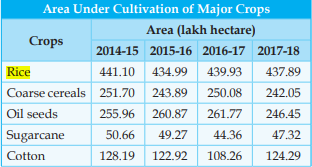Infographics
Biodiversity & Environment
World Bank Report on Air Pollution
For Prelims: National Clean Air Programme, World Bank
For Mains: Environmental Pollution & Degradation
Why in News?
Recently, the World Bank released a report titled 'Striving for Clean Air: Air Pollution and Public Health in South Asia'.
- The report details how persisting with policies currently being implemented (largely since 2018) will yield results but not to the desired level.
What are the Highlights of the Report?
- Airsheds:
- Six large airsheds exist in South Asia, where the air quality in one can affect the air quality in another. They are:
- West/Central Indo-Gangetic Plain (IGP) that included Punjab (Pakistan), Punjab (India), Haryana, part of Rajasthan, Chandigarh, Delhi, Uttar Pradesh.
- Central/Eastern IGP: Bihar, West Bengal, Jharkhand, Bangladesh
- Middle India: Odisha/Chhattisgarh
- Middle India: Eastern Gujarat/Western Maharashtra
- Northern/Central Indus River Plain: Pakistan, part of Afghanistan; and
- Southern Indus Plain and further west: South Pakistan, Western Afghanistan extending into Eastern Iran.
- When the wind direction was predominantly northwest to the southeast, 30% of the air pollution in Indian Punjab came from the Punjab Province in Pakistan and, on average, 30% of the air pollution in the largest cities of Bangladesh (Dhaka, Chittagong, and Khulna) originated in India. In some years, substantial pollution flowed in the other direction across borders.
- Six large airsheds exist in South Asia, where the air quality in one can affect the air quality in another. They are:
- Exposure to PM 2.5:
- Currently over 60% of South Asians are exposed to an average 35 µg/m3 of PM2.5 annually.
- In some parts of the IGP it spiked to as much as 100 µg/m3 – nearly 20 times the upper limit of 5 µg/m3 recommended by the World Health Organisation (WHO).
- Dominant Sources of Air Pollution:
- Large industries, power plants and vehicles are dominant sources of air pollution around the world, but in South Asia, other sources make substantial additional contributions.
- These include combustion of solid fuels for cooking and heating, emissions from small industries such as brick kilns, burning of municipal and agricultural waste, and cremation.
What are the Suggestions?
- Reducing Airsheds:
- Governmental measures can reduce particulate matter, but significant reductions in airsheds require coordinated policies across the airsheds.
- If Delhi National Capital Territory were to fully implement all air pollution control measures by 2030 while other parts of South Asia continued to follow current policies, it wouldn’t keep pollution exposure below 35 µg/m3.
- However, if other parts of South Asia also adopted all feasible measures it would bring pollution below that number.
- Governmental measures can reduce particulate matter, but significant reductions in airsheds require coordinated policies across the airsheds.
- Changing Approach:
- South Asian countries including India need to change their approach in order to improve air quality and reduce pollutants to levels considered acceptable by the WHO.
- Close Coordination Required:
- Curbing air pollution requires not only tackling its specific sources, but also close coordination across local and national jurisdictional boundaries.
- Regional cooperation can help implement cost-effective joint strategies that leverage the interdependent nature of air quality.
- The most cost-effective one, which calls for full coordination between airsheds, would cut the average exposure of PM 2.5 in South Asia to 30 µg/m³ at a cost of USD 278 million per µg/mᶾ of reduced exposure and save more than 7,50,000 lives annually.
What is Airsheds?
- The World Bank defines an airshed as a common geographic area where pollutants get trapped, creating similar air quality for everyone.
What are the Related Steps taken?
- National Clean Air Campaign (NCAP):
- Launched in 2019, it aims to reduce air pollution in 131 of India’s most polluted cities.
- The target was initially to cut pollution by 20%-30% by 2024 over 2017 levels but has now been revised to cutting it by 40% by 2025-26.
- System of Air Quality and Weather Forecasting and Research (SAFAR) Portal
- Air Quality Index: AQI has been developed for eight pollutants viz. PM2.5, PM10, Ammonia, Lead, nitrogen oxides, sulphur dioxide, ozone, and carbon monoxide.
- Graded Response Action Plan (for Delhi)
- For Reducing Vehicular Pollution:
- BS-VI Vehicles,
- Push for Electric Vehicles (EVs),
- Odd-Even Policy as an emergency measure (for Delhi)
- New Commission for Air Quality Management
- Subsidy to farmers for buying Turbo Happy Seeder (THS) Machine for reducing stubble burning.
- National Air Quality Monitoring Programme (NAMP):
- Under NAMP, four air pollutants viz. SO2, NO2, PM10, and PM2.5 have been identified for regular monitoring at all locations.
UPSC Civil Services Examination Previous Year Question (PYQ)
Prelims
Q. In the cities of our country, which among the following atmospheric gases are normally considered in calculating the value of Air Quality Index? (2016)
- Carbon dioxide
- Carbon monoxide
- Nitrogen dioxide
- Sulfur dioxide
- Methane
Select the correct answer using the code given below:
(a) 1, 2 and 3 only
(b) 2, 3 and 4 only
(c) 1, 4 and 5 only
(d) 1, 2, 3, 4 and 5
Ans: (b)
Mains
Q. Describe the key points of the revised Global Air Quality Guidelines (AQGs) recently released by the World Health Organisation (WHO). How are these different from its last update in 2005? What changes in India’s National Clean Air Programme are required to achieve revised standards? (2021)


Governance
Pradhan Mantri Virasat Ka Samvardhan Scheme
For Prelims: Pradhan Mantri Virasat Ka Samvardhan Scheme, Pradhan Mantri Jan Vikas Karykram
For Mains: Government Policies and Intervention, Skill Development Schemes
Why in News?
Pradhan Mantri Kaushal Ko Kaam Karyakram (PMKKK) has been named as Pradhan Mantri Virasat Ka Samvardhan (PM VIKAS) Scheme by the Ministry of Minority Affairs.
What are the Key Points of the Scheme?
- About:
- It is a Central-Sector Scheme, which focuses on the skilling, entrepreneurship and leadership training requirements of the minority and artisan communities across the country.
- This is an integrated scheme that converges five erstwhile schemes of the Ministry of Minority Affairs viz,
- Seekho aur Kamao:
- This is a placement linked skill development scheme for minorities aiming to upgrade the skills of minority youth in various modern/traditional skills depending upon their qualification, present economic trends and market potential
- USTTAD (Upgrading the Skills & Training in Traditional Arts/Crafts for Development): It aims to promote and preserve the rich heritage of the traditional arts & crafts of the minority communities.
- Hamari Dharohar: It has been formulated to preserve rich heritage of minority communities of India.
- Nai Roshni: It is a Leadership Development Programme for women belonging to minority communities in the age group of 18 to 65 years. It was started in 2012-13.
- Nai Manzil: The scheme aims to benefit the youth (both men & women) belonging to six notified minority communities of 17-35 years of age, who do not have formal school leaving certificate.
- Seekho aur Kamao:
- The scheme has been approved by the Cabinet for the period of 15th Finance Commission.
- Components:
- Skill and Training
- Leadership and Entrepreneurship
- Education
- Infrastructure Development
- Objectives:
- PM VIKAS aims to improve the livelihoods of the minorities, particularly the artisan communities, using the components of skill development, education, women leadership & entrepreneurship.
- These components complement each other in the ultimate objective of the scheme to increase the incomes of the beneficiaries and provide support by facilitating credit and market linkages.
What are the Other Schemes Related to the Minority?
- Pradhanmantri Jan Vikas Karykram:
- The programme aims to develop socio-economic and basic amenities assets like school, college, polytechnic, girls' hostel, ITI, skill development centre etc for the minority communities.
- Begum Hazrat Mahal Girls Scholarships:
- Scholarships for economically backward girls belonging to the six notified Minority communities.
- Gharib Nawaz Employment Scheme:
- It was launched so that short-term job-oriented skill development courses may be provided to minorities’ youth in order to enable them for skill based employment.
- Hunar Haat:
- Launched to provide market and employment and employment opportunities to master artisans, craftsmen and traditional culinary experts.

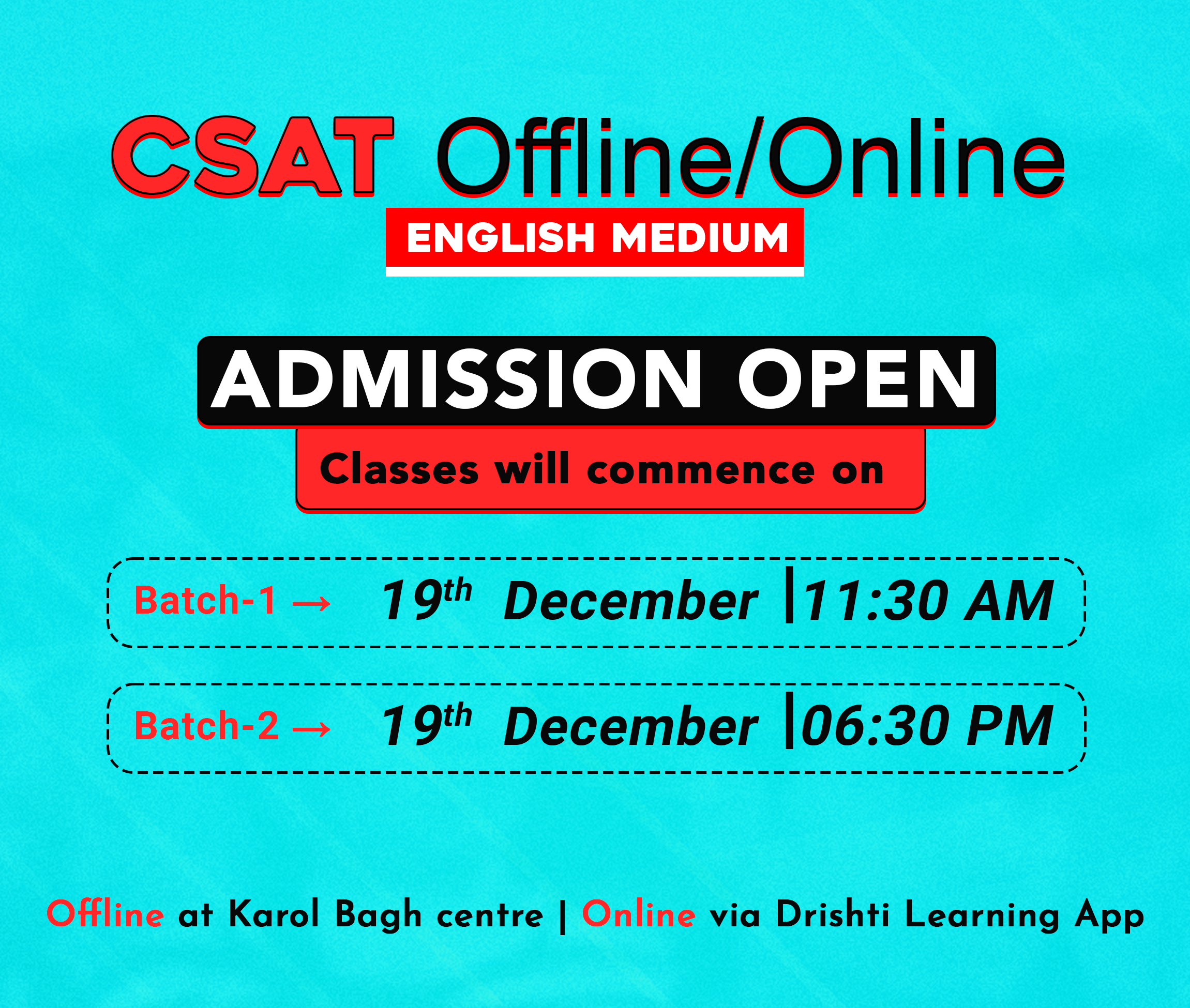
Indian Polity
Recusal of Judges
For Prelims: Recusal of Judges, Supreme Court
For Mains: Recusal of Judges and related concerns
Why in News?
Recently, a Supreme Court (SC) judge recused herself from hearing a writ petition filed by Bilkis Bano against a Gujarat government decision to prematurely release 11 men sentenced to life imprisonment for gang-raping her during the 2002 riots.
What is Recusal?
- About:
- It is the act of abstaining from participation in an official action such as a legal proceeding due to a conflict of interest of the presiding court official or administrative officer.
- Rule for Recusal:
- There are no formal rules governing recusals, although several SC judgments have dealt with the issue.
- In Ranjit Thakur v Union of India (1987), the SC held that the test of the likelihood of bias is the reasonableness of the apprehension in the mind of the party.
- The judge needs to look at the mind of the party before him, and decide that he is biased or not.
- There are no formal rules governing recusals, although several SC judgments have dealt with the issue.
- Reason for Recusal:
- When there is a conflict of interest, a judge can withdraw from hearing a case to prevent creating a perception that he carried a bias while deciding the case.
- The conflict of interest can be in many ways such as:
- Having a prior or personal association with a party involved in the case.
- Appeared for one of the parties involved in a case.
- Ex parte communications with lawyers or non-lawyers.
- An appeal is filed in the SC against a judgement of a High Court (HC) that may have been delivered by the SC judge when he was in the HC.
- In a matter of a company in which he holds shares unless he has disclosed his interest and there is no objection to it.
- The practice stems from the cardinal principle of due process of law that nobody can be a judge in her own case.
- Any interest or conflict of interest would be a ground to withdraw from a case since a judge has a duty to act fair.
What is the Process of Recusal?
- The decision to recuse generally comes from the judge himself as it rests on the conscience and discretion of the judge to disclose any potential conflict of interest.
- Some judges orally convey to the lawyers involved in the case their reasons for recusal, many do not. Some explain the reasons in their order.
- In some circumstances, lawyers or parties in the case bring it up before the judge. Once a request is made for recusal, the decision to recuse or not rests with the judge.
- While there are some instances where judges have recused even if they do not see a conflict but only because such an apprehension was cast, there have also been several cases where judges have refused to withdraw from a case.
- If a judge recuses, the case is listed before the Chief Justice for allotment to a fresh Bench.
What are the Concerns related to Recusal?
- Undermining Judicial Independence:
- It allows litigants to cherry-pick a bench of their choice, which impairs judicial fairness.
- Also, the purpose of recusal in these cases undermines both independence and impartiality of the judges.
- Different Interpretations:
- As there are no rules to determine when the judges could recuse themselves in these cases, there are different interpretations of the same situation.
- Delays the Process:
- Some requests for recusal are made with the intent to intimidate the court or to get better of an 'inconvenient' judge or to obfuscate the issues or to cause obstruction and delay the proceedings or in any other way frustrate or obstruct the course of justice.
Way Forward
- Recusals should not be used as a tool to manoeuvre justice, as a means to pick benches of a party’s choice, and as an instrument to evade judicial work.
- Judicial officers must resist all manner of pressure, regardless of where it comes from and if they deviate, the independence of the judiciary would be undermined, and in turn, the Constitution itself.
- Therefore, a rule that determines the procedure for recusal on part of judges should be made at the earliest.

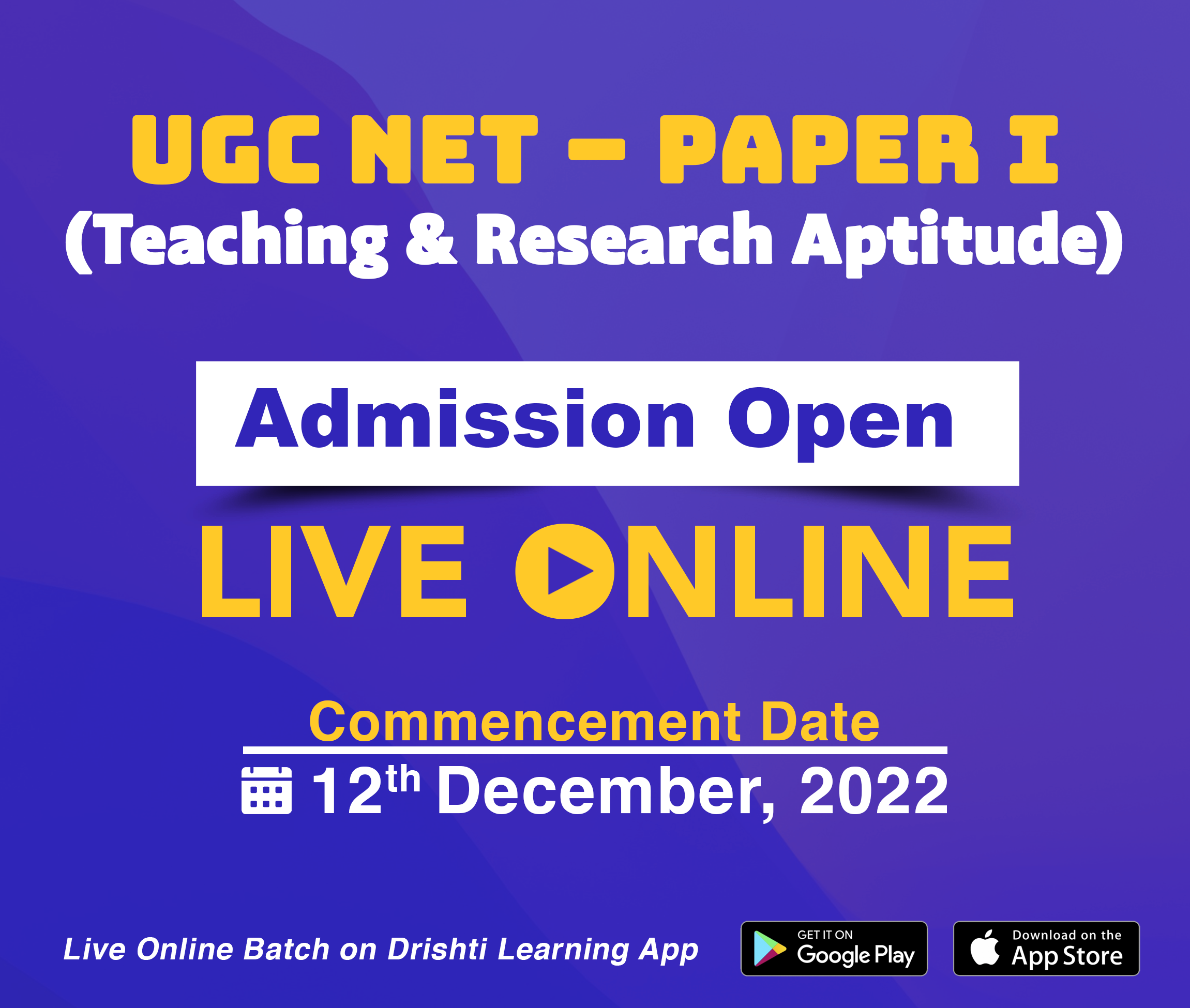
Indian Economy
Open Network for Digital Commerce
For Prelims: Open Network for Digital Commerce, UPI, Initiatives related to e-Commerce
For Mains: Significance of Open Network for Digital Commerce
Why in News?
Open Network for Digital Commerce (ONDC) will charge a “small fee" from platforms that will contribute towards “maintenance and development" of the network.
- The network will seek to reduce the compulsory commissions charged from sellers and logistics partners on the network by private e-commerce firms such as US-based Amazon and homegrown Flipkart — the two largest e-commerce firms in the country.
What is ONDC?
- About:
- It is an open e-commerce protocol set up by the Ministry of Commerce’s Department of Promotion of Industry and Internal Trade (DPIIT).
- Under ONDC, it is envisaged that a buyer registered on one participating e-commerce site (for example, Amazon) may purchase goods from a seller on another participating e-commerce site (for example, Flipkart).
- Presently, buyers and sellers have to be on the same app for a transaction which happens through the same platform. For example, a buyer needs to go to Amazon, to buy a product from a seller on Amazon.
- Objectives:
- Democratisation and decentralization of eCommerce
- Inclusivity and access for sellers, especially small and medium enterprises as well as local businesses
- Increased choices and independency for consumers
What Benefits Does the ONDC Offer?
- Level Playing Field: ONDC is keen to level the playing field for e-commerce operators and widen the digital market access for Micro, Small and Medium Enterprises (MSMEs) and small traders in the country.
- Competitive and Innovative Ecosystem: ONDC will empower suppliers and consumers by breaking the monopoly of giant platforms to drive innovation and transform businesses in sectors like retail, food, and mobility.
- Freedom of Choice for Consumers: Consumers can potentially discover any seller, product or service in a common platform, thus increasing freedom of choice for consumers.
- Neutral and Regulated Platform: ONDC aims at fostering open networks developed on open-sourced methodology, using open specifications and network protocols, and independent of any specific platform.
- It will set protocols for cataloguing, vendor match, and price discovery on an open source-basis, like the Unified Payments Interface (UPI).
What are the Issues with ONDC?
- ONDC is a complex ecosystem to implement, unlike UPI.
- Switching customers from the incumbents, which are offering a satisfactory service, will be difficult.
- Network participants may not make significant market development investments initially.
- Growth in the seller base will not necessarily improve buyer experience on the network.
- Monetisation on the network is not very clear.
- Attaining critical mass will be difficult as buyer and seller sides are disconnected.
- Lack of clarity on accountability, especially in addressing customer complaints and returns.
Way Forward
- A better digital space for e-commerce must be built by the government in order to compete with the dominant e-commerce platforms.
- Along with this, it's important to create a proper digital education policy that takes into account various languages and user-friendly interface for the benefit of the consumers as well as sellers.
- A massive, well-funded adoption campaign will be needed to bring over tens of millions of kirana stores to the platform.
- The demand and supply sides should be able to access a secured single window to resolve issues such as information asymmetry, opaque pricing, quality concerns, and buyer-seller disputes.
UPSC Civil Services Examination, Previous Years Questions (PYQs)
Q. Consider the following: (2022)
- Aarogya Setu
- CoWIN
- DigiLocker
- DIKSHA
Which of the above are built on top of open-source digital platforms?
(a) 1 and 2 only
(b) 2, 3 and 4 onlyb
(c) 1, 3 and 4 only
(d) 1, 2, 3 and 4
Ans: (d)

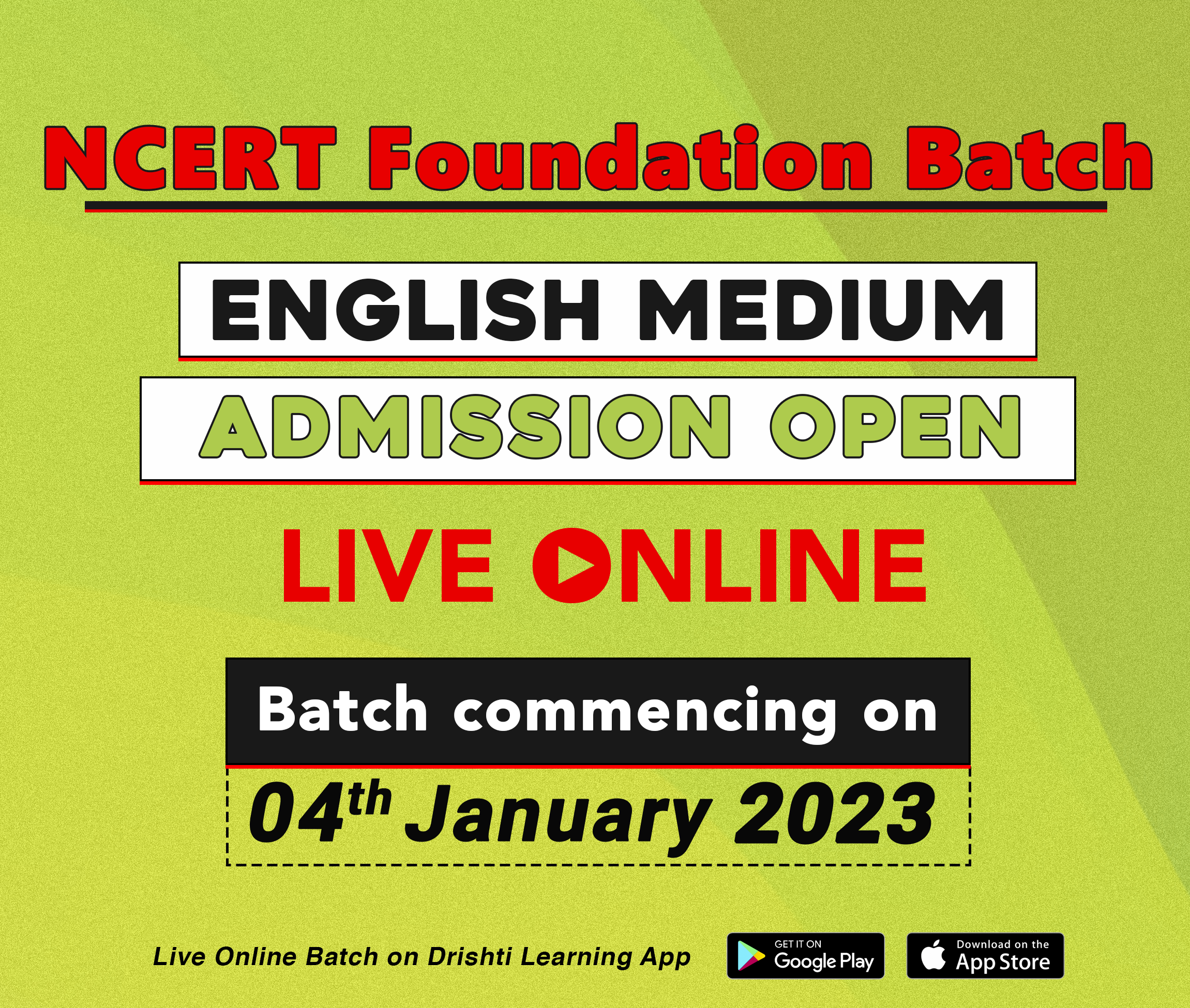
Governance
Indian Footwear and Leather Development Programme
For Prelims: Indian Footwear and Leather Development Programme Scheme
For Mains: Leather Industry, Government policies and interventions
Why in News?
Recently, the Union Government has approved the continuation of the Scheme ‘Indian Footwear and Leather Development Programme (IFLDP)’ till 31st March 2026 or till further review.
- IFLDP was approved as continuation of the erstwhile IFLADP (Indian Footwear Leather and Accessories Development Programme).
What is IFLDP Scheme?
- About:
- It is a Central Sector Scheme, which aims at development of infrastructure for the leather sector, address environmental concerns specific to the leather sector, facilitate additional investments, employment generation and increase in production.
- It was launched by Department for Promotion of Industry and Internal Trade under the Ministry of Commerce and Industry.
- Sub-Schemes:
- Sustainable Technology and Environmental Promotion (STEP)
- Integrated Development of Leather Sector (IDLS)
- Mega Leather Footwear and Accessories Cluster Development (MLFACD)
- Establishment of Institutional Facilities (EIF)
- Brand Promotion of Indian Brands in Footwear and Leather Sector
- Development of Design Studios in Footwear and Leather Sector
What is the Impact of erstwhile IFLADP?
- The programme has a direct benefit towards quality employment generation especially for women, skill development, decent work, making the industry more environment friendly and prompting a sustainable production system.
- The leather clusters located in different parts of the country have accrued benefit in terms of reduction of poverty, gender equality, sector specific skill/education, etc., thus touching many of the Sustainable Development Goals (SDGs).
- Other National Development Plans (NDPs) such as economic growth, generation of employment, good health and well-being, infrastructure development, affordable and clean energy and other environmental benefits are well-served by the IFLAD Programme.
What is the Current Status of India’s Leather Industry?
- The Leather industry in India accounts for around 13% of the world’s leather production of hides/skins and handles a robust annual production of about 3 bn sq. ft. of leather.
- The industry is known for its consistency in high export earnings and it is among the top 10 foreign exchange earners for the country.
- India has an abundance of raw materials with access to 20% of the world's cattle and buffalo and 11% of the world’s goat and sheep population.
- The Leather industry is an employment intensive industry providing jobs to more than 4 million people, mostly from the weaker sections of the society.
- Women employment is predominant in Leather products industry with about 30% share.
- The Leather industry in India has one of the youngest workforces with 55% of the workforce below 35 years of age.
- As of 2022, India is the second largest producer of footwear and leather garments, second largest exporter of leather garments and fifth largest exporter of leather goods & accessories in the world.
- The major production centres of leather and footwear products in India are located in Tamil Nadu, Andhra Pradesh, West Bengal, Uttar Pradesh, Maharashtra, Punjab, Haryana and Delhi.
- The major markets for Indian Leather & Footwear Products are USA, Germany, U.K, Italy, France, Spain, Netherlands, U.A.E, China, Hong Kong, Belgium, and Poland.
- USA is the largest importer of leather and leather products from India and accounted for 25.19% of the country’s total leather exports during April-August 2022.

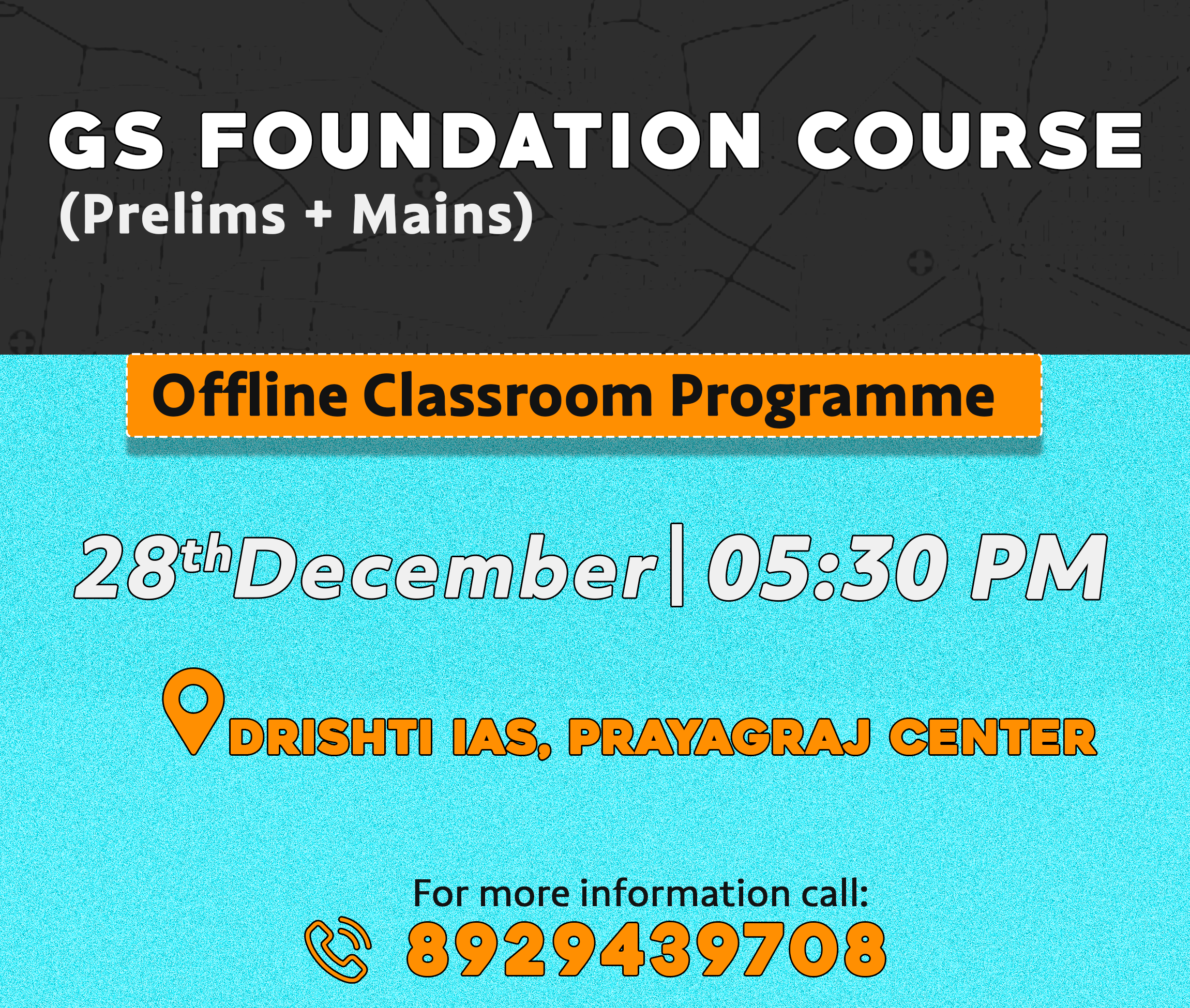
Important Facts For Prelims
Water Worlds
Why in News?
According to a new study, a team of astronomers have found water worlds, two exoplanets orbiting a red dwarf star.
What are the Key Findings?
- About the Exoplanets:
- These exoplanets are Kepler-138c and Kepler-138d, which were observed using NASA’s Hubble and retired Spitzer space telescope.
- It is the first-time planets are confidently identified as water worlds, a type of planet that was theorized by astronomers to exist for a long time.
- The exoplanets are located in a planetary system that is 218 light years away in the constellation Lyra and are unlike any planets in our solar system.
- The new planet takes 38 days to complete an orbit.
- It is in the habitable zone, meaning it is located in an orbit that receives just the right amount of heat from its star to allow water to exist in a liquid form.
- Findings:
- Kepler- 138c and d are made up of ingredients lighter than rock (rocky planets like Earth) but heavier than hydrogen or helium (gas-giant planets like Jupiter).
- This signals the presence of water, up to half of the mass of the twin worlds should be water.
- The volume of the two is three times that of Earth and mass twice as big, they calculated.
- They are also larger-scale versions of Enceladus (Saturn’s moon) and Europa (Jupiter’s moon).
- The density of the twin exoplanets is lower than Earth but comparable to Enceladus and Europa.
- Until now, worlds slightly larger than Earth would likely have rocky features.
- These twin planets of the same size and mass are more massive than Earth but lighter than ice giants Uranus and Neptune.
- But they are different from the planets in our solar system, which is chiefly composed of rocky planets like Earth and gas giants like Jupiter.
- Significance:
- It can help researchers address the knowledge gap and find more water worlds in the future.


Important Facts For Prelims
Ikki Jathre
Why in News?
Recently, a Kerala-based organisation, Thanal launched the Ikki Jathre or the Festival of Rice in tribal parlance whereby 300 climate-resilient varieties of traditional rice were planted at Panavally, Wayanad.
- Thanal initiated the Rice Diversity Block (RDB) at Panavally under the Save Our Rice campaign in 2009, with a collection of 30 varieties of rice which now expanded to 300.
What is Ikki Jathre?
- The initiative aims to sensitise people to the significance of conserving traditional crops that have the ability to withstand harsh climatic conditions.
- The festival also sets the stage for knowledge sharing and co-creation of knowledge between tribal farmers and experts.
- For the RDB, most of the varieties were collected from Kerala, Karnataka, Assam, Tamil Nadu, Arunachal Pradesh, Maharashtra and West Bengal.
- Also, there are three traditional rice varieties from Vietnam and Thailand.
What is Save Our Rice Campaign?
- About:
- Save our rice campaign is a people’s movement to protect the diverse rice cultures, knowledge, and ensure food sovereignty.
- In India, it started in 2004, and empowers communities build sustainable food security and livelihood.
- Functions:
- Establishing community RDBs and seed banks, conserving and promoting indigenous varieties of paddy seeds.
- Creating awareness about value of rice diversity among urban consumers.
- Facilitating adoption of agro-ecological farming in rice ecosystems, and encouraging farmers, states and local governments to adopt indigenous seeds.
- Enabling active discussions in the media about indigenous seeds and agro ecological farming.
What are the Key Facts About Rice?
- Rice is a staple food for most of the population in India.
- It is a kharif crop which requires high temperature, (above 25°C) and high humidity with annual rainfall above 100 cm.
- In the areas of less rainfall, it is grown with the help of irrigation.
- In southern states and West Bengal, the climatic conditions allow the cultivation of two or three crops of rice in an agricultural year.
- In West Bengal farmers grow three crops of rice called ‘aus’, ‘aman’ and ‘boro’.
- About one-fourth of the total cropped area in India is under rice cultivation.
- Leading Producer States: West Bengal, Uttar Pradesh, and Punjab.
- High Yielding States: Punjab, Tamil Nadu, Haryana, Andhra Pradesh, Telangana, West Bengal and Kerala.
- India is the second-largest producer of rice after China.
UPSC Civil Services Examination, Previous Year Questions (PYQs)
Q1. With reference to the cultivation of Kharif crops in India in the last five years, consider the following statements: (2019)
- Area under rice cultivation is the highest.
- Area under the cultivation of jowar is more than that of oilseeds.
- Area of cotton cultivation is more than that of sugarcane.
- Area under sugarcane cultivation has steadily decreased.
Which of the statements given above are correct?
(a) 1 and 3 only
(b) 2, 3 and 4 only
(c) 2 and 4 only
(d) 1, 2, 3 and 4
Ans: (a)
- Hence, statements 1 and 3 are correct, and statements 2 and 4 are not correct. Therefore, option (a) is the correct answer.
Q2. Consider the following crops: (2013)
- Cotton
- Groundnut
- Rice
- Wheat
Which of these are Kharif crops?
(a) 1 and 4
(b) 2 and 3 only
(c) 1, 2 and 3
(d) 2, 3 and 4
Ans: (c)
Q3. Among the following, which one is the largest exporter of rice in the world in the last five years? (2019)
(a) China
(b) India
(c) Myanmar
(d) Vietnam
Ans: (b)
Q4. System of Rice Intensification" of cultivation, in which alternate wetting and drying of rice fields is practised, results in: (2022)
- Reduced seed requirement
- Reduced methane production
- Reduced electricity consumption
Select the correct answer using the code given below:
(a) 1 and 2 only
(b) 2 and 3 only
(c) 1 and 3 only
(d) 1, 2 and 3
Ans: (d)
Exp:
- The "Rice Intensification System" of agriculture, in which the paddy fields are alternately cleaved and dried, the main objective of this method is less requirement of seed, less production of methane and less consumption of electricity.
- Hence option (d) is correct.
Q5. Among the following crops, which one is the most important anthropogenic source of both methane and nitrous oxide? (2022)
(a) Cotton
(b) Rice
(c) Sugarcane
(d) Wheat
Ans: (b)


Important Facts For Prelims
GI Status for Kerala’s Five Agricultural Products
Why in News?
Five agricultural products of Kerala- Attappady Attukombu Avara, Attappady Thuvara, Onattukara Ellu, Kanthalloor-Vattavada Veluthulli, and Kodungalloor Pottuvellari have been granted Geographical Indication (GI) status.
- The Gamosa (traditional cloth) of Assam, Alibag White Onion from Maharashtra, Ladakh Raktsey Karpo Apricot and Tandur Redgram of Telangana also got GI tag recently.
What are the Key Facts about the Latest GIs?
- Attappady Attukombu Avara (Beans):
- It is curved like a goat’s horn as its name indicates.
- Its higher anthocyanin content compared to other dolichos beans imparts violet colour in the stem and fruits.
- Anthocyanin is helpful against cardiovascular diseases along with its antidiabetic properties.
- The higher phenolic content of Attappady Attukombu Avara imparts resistance against pest and diseases, making the crop suitable for organic cultivation.
- Attappady Thuvara (Red Gram):
- It is having seeds with white coat.
- Compared to other red grams, Attappady Thuvara seeds are bigger and have higher seed weight.
- Onattukara Ellu (Sesame):
- Onattukara Ellu and its oil are famous for its unique health benefits.
- Relatively higher antioxidant content in Onattukara Ellu helps in fighting the free radicals, which destroy the body cells.
- Also, the high content of unsaturated fat makes it beneficial for heart patients.
- Kanthalloor-Vattavada Veluthulli (Garlic):
- Compared to the garlic produced in other areas, this garlic contains higher amount of sulphides, flavonoids, proteins and also rich in essential oil.
- It is rich in allicin, which is effective against microbial infections, blood sugar, cancer, etc.
- Kodungalloor Pottuvellari (Snapmelon):
- This snap melon, which is harvested in summer, contains high amount of Vitamin C.
- Compared to other cucurbits, nutrients such as calcium, magnesium, fibre and fat content are also high in Kodungalloor Pottuvellari.
UPSC Civil Services Examination, Previous Years Questions (PYQs)
Q1. Which of the following has/have been accorded ‘Geographical Indication’ status? (2015)
- Banaras Brocades and Sarees
- Rajasthani Daal-Bati-Churma
- Tirupathi Laddu
Select the correct answer using the code given below:
(a) 1 only
(b) 2 and 3 only
(c) 1 and 3 only
(d) 1, 2 and 3
Ans: (c)
Exp:
- A Geographical Indication (GI) is a sign used on products that have a specific geographical origin and possess qualities or a reputation that are due to that origin.
- Darjeeling tea was the first product in India to get a GI tag.
- Banaras Brocades and Sarees and Tirupathi Laddu have got GI tag while Rajathan’s Daal-Baati-Churma does not. Hence, 1 and 3 are correct. Therefore, option (c) is the correct answer.
Q2. India enacted the Geographical Indications of Goods (Registration and Protection) Act, 1999 in order to comply with the obligations to (2018)
(a) ILO
(b) IMF
(c) UNCTAD
(d) WTO
Ans: (d)
Exp:
- Geographical indications (GIs) are a type of intellectual property (IP). The World Trade Organisation (WTO) recognises intellectual property rights under TRIPS (TradeRelated Aspects of Intellectual Property Rights) Agreement.
- Under Article 22(1) of the TRIPS Agreement, the GIs are defined as “indications which identify a good as originating in the territory of a Member, or a region or locality in that territory, where a given quality, reputation or other characteristic of the good is essentially attributable to its geographic origin”.
- Therefore, option (d) is the correct answer.


Important Facts For Prelims
Kazind – 2022
Why in News?
The 6th Edition of India - Kazakhstan joint training exercise “KAZIND-22” is being conducted at Umroi (Meghalaya).
What is Kazind – 2022?
- About:
- It is a joint annual training exercise with the Kazakhstan Army and was instituted in 2016 as Exercise Prabal Dostyk, which was later upgraded to a company level exercise and renamed as Ex Kazind in 2018.
- Aim:
- To build positive military relations, imbibe each other’s best practices and promote the ability to operate together while undertaking counter terrorist operations in semi urban / jungle scenario.
How is Kazakhstan Important for India?
- Surrounded by the Caspian Sea in the west to Russia in the North and China in the East, Kazakhstan, the largest country in Central Asia and the ninth largest country in the world asserts great strategic importance.
- Kazakhstan holds great significance to India especially in terms of energy resources and its economic potential and also due to its geo-strategic location.
- From the perspective of energy resources, Kazakhstan is the world’s largest producer of Uranium.
- India and Kazakhstan actively cooperate under the aegis of various multilateral fora including Confidence-Building Measures in Asia (CICA), Shanghai Cooperation Operation (SCO) and the United Nations (UN) organisations.



.png)


